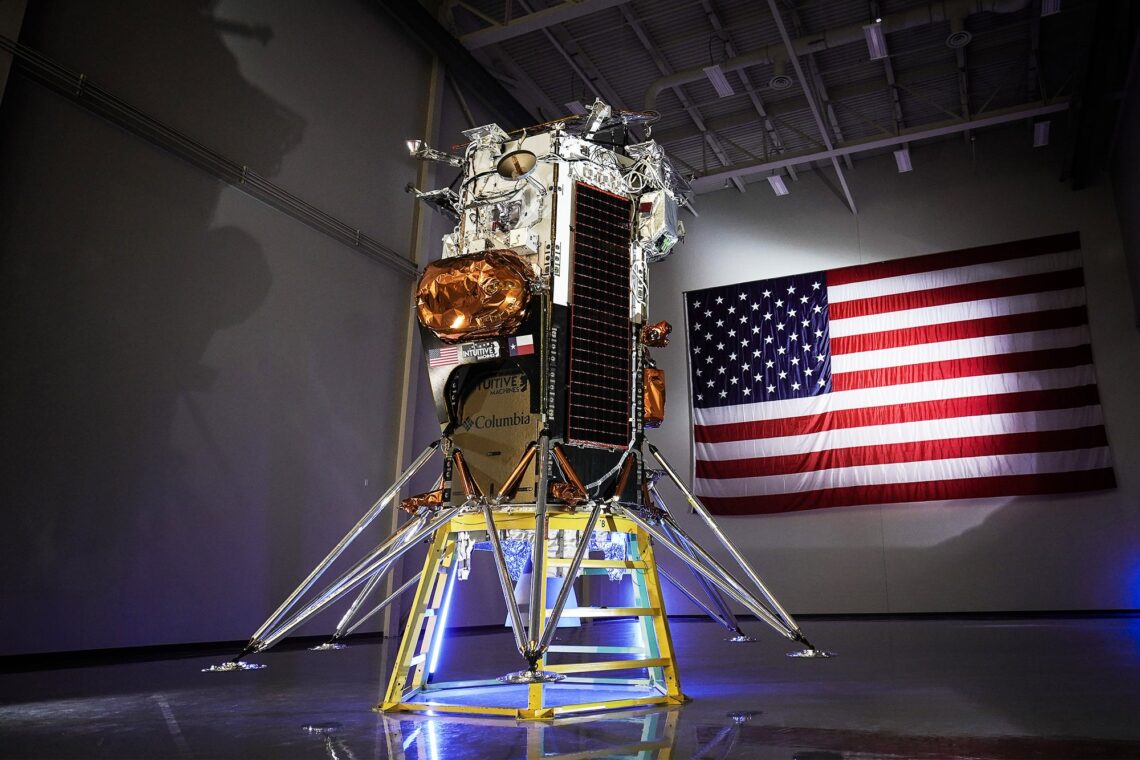In the ancient Greek epic the Odyssey, Ithacan king Odysseus doggedly sails through treacherous waters to get back home. As soon as this Valentine’s Day, a spacecraft of the same name will attempt a dangerous journey of its own: the first U.S. soft landing on the moon since 1972.
As soon as 12:57 A.M. EST on February 14, a 14-foot-tall moon lander built by the Houston-based company Intuitive Machines will launch atop a SpaceX Falcon 9 rocket. That spacecraft, nicknamed Odie—short for Odysseus—will be carrying payloads ranging from NASA science instruments to a group of sculptures by artist Jeff Koons. Odie’s destination: a crater less than 200 miles from the lunar south pole.
This mission, named IM-1, is flying under NASA’s Commercial Lunar Payload Services (CLPS) initiative, which encourages private companies to take over the delivery of supplies and scientific instruments to the moon. Intuitive Machines is one of several companies angling to be the first private firm to ever softly land a spacecraft on another celestial body.
On supporting science journalism
If you’re enjoying this article, consider supporting our award-winning journalism by subscribing. By purchasing a subscription you are helping to ensure the future of impactful stories about the discoveries and ideas shaping our world today.
“We understand and welcome the responsibility of our IM-1 mission,” said Intuitive Machines’ vice president of space systems Trent Martin in a January 31 media briefing. “The hopes and dreams of our customers, employees, their families, our shareholders and the lunar operations of the entire country are encapsulated and ready for launch.”
The mission marks a major test for CLPS, which will pay out as much as $2.6 billion to private companies for lunar deliveries. NASA hopes to save substantial money through the program. In 2019 Intuitive Machines received a NASA contract for IM-1 that is now worth $118 million. That’s less than the agency historically…
Read the full article here







